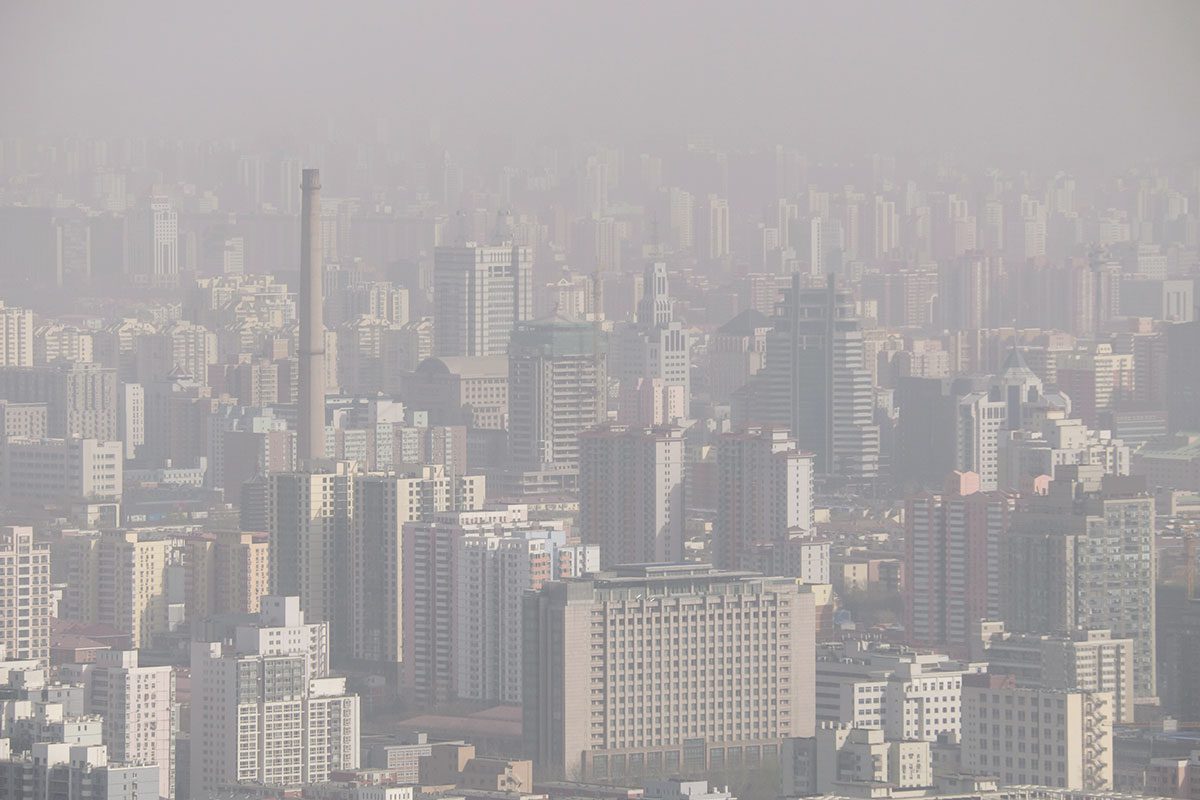A recent book charts the history of air pollution, and profiles the problem as it presents itself today. The Invisible Killer – by Dr Gary Fuller, an air pollution scientist at King’s College, London – offers an unsettling run-down of the facts and figures around modern air pollution, writes Envirotec, but it is also full of human interest, and insight into the forces that have shaped our current perception of the problem, and the challenges it presents

Air pollution remains mystifyingly low key in political debate, even as its stature as a public health problem grows to unignorable proportions. It is a complex problem, produced by a wide range of different human activity, and manifesting in different forms in different parts of the world.
In some contexts the problem is one of particles – such as soot and the particulates from exhausts – while elsewhere the problem pollutants are gases, such as the NO2 that currently focuses air quality improvement efforts in European cities.
It’s certainly a widespread problem, with more than 90 percent of the global population exposed to levels exceeding WHO recommended limits. It is also one marked by significant injustices: “By using our air to dispose of their waste,” writes Fuller, “polluters are destroying a shared resource and avoiding the full cost of their actions.”
Denial of the problem Fuller traces back to Jacobean London, when even the weekly records of mortality levels commissioned by James I revealed that there was something strange afoot, which couldn’t be explained by plague. Yet despite the lugubrious reports of physician John Evelyn at the time, the consensus view was that smoke was good for London’s inhabitants.
The Victorian era and first half of the twentieth century were particularly bad, a time when the growth of air pollution in cities followed a trajectory “rather like a ship heading towards an iceberg”.
Early measurements
But the late Victorian era saw the emergence of a key figure: John Switzer Owens, uniquely qualified as both doctor and engineer, who took the first detailed measurements pertaining to air pollution, and was a prolific inventor of some of the first instruments to do so.
Fuller writes vividly about a time when, as Owens is said to have reported, in Fuller’s paraphrasing “smogs caused a haze that he could see looking across his living room”.
The infamous London smog of the early 1950s provided a landmark, and decisive indications about the link between air pollution and public health, and the book includes graphs showing the correlation between spikes in pollution and mortality over this period.
More alarmingly it recounts how the death rate remained high even after these events had subsided, in this case enduring into the March that followed the particularly severe smog of December 1952.
Even with the data available, the obvious doubt and prevarication provoked by the huge death toll figures– upwards of four thousand but announced as 2,851 by the Ministry of Health – provides an interesting case study in the difficulties faced by authorities when it comes to acknowledging the emergence of such a dire threat within plain sight. As Fuller says, “It simply was not credible that the smog had killed more than four thousand people.”
It took an investigation to build a case for action, and this was led by another of the many memorable characters in the history explored by the book: Sir Hugh Beaver (whose legacy also includes the town of Milton Keynes and The Guinness Book of Records).
The book seems to serve up the truth unvarnished by deference to the architects of various fiascos, and a chapter on “The madness of lead in petrol” had me shaking my head in disbelief. In the 1920s, Fuller writes, “humanity entered into a Faustian pact, selling our future health and environment for short-term gain.”
This was the decision to introduce a lead additive to petrol, an innovation credited to chemist and prolific inventor Tomas Midgley, who in so doing gained the dubious credit of having “had more impact on the atmosphere than any other single organism in Earth’s history”.
 Fuller traces key staging posts, arriving at a point in 1970s Europe when scientific recommendations finally resulted in reductions in the content of lead in petrol. It all provides sobering reading, and a fitting occasion to deploy the injunction “no evidence of harm is not the same as evidence of no harm”, an epithet that is maybe as relevant to today’s Facebook discussions and the like, about whether or not there are dangers presented by mobile phone signals and wifi.
Fuller traces key staging posts, arriving at a point in 1970s Europe when scientific recommendations finally resulted in reductions in the content of lead in petrol. It all provides sobering reading, and a fitting occasion to deploy the injunction “no evidence of harm is not the same as evidence of no harm”, an epithet that is maybe as relevant to today’s Facebook discussions and the like, about whether or not there are dangers presented by mobile phone signals and wifi.
Despite knowledge of the health and environmental effects of leaded petrol, and widespread public support for its removal – which gathered pace in the 1980s – it wasn’t until 1999 that a complete ban on lead in petrol was enforced in the UK.
As Fuller muses, the UK’s reluctance is likely for two reasons: the slowness of UK car manufacturers to invest in engines able to run on lead-free petrol, and the fact that a factory in the UK was Europe’s biggest manufacturer of the lead additive in question.
The book also highlights the shameful place in environmental history occupied by the UK with respect to acid rain, and the problem’s genesis in cold war tensions in Europe in the 1980s which led to the USSR and Warsaw Pact countries becoming leading supporters of sulphur reduction, this being one of the least contentious of the many issues in dispute between either side of the Iron Curtain.
A combination of industrial coal and oil burning, and strong westerly winds, later led the UK to become Europe’s largest exporter of sulphuric acid pollution, and earning the label “the dirty man of Europe”.
Fuller draws a parallel with the climate change denial of today, with UK civil servants and scientists enlisting the help of scientific journals and the popular media in a bid to discredit the research, highlighting the uncertainties rather than the known facts, and working to create an atmosphere of doubt. It was only in 1985 that the UK government – under Thatcher – finally agreed to comply with sulphur controls.
There is also much on the factors that affect the variability of air pollution in different countries and regions. While the industrialised regions of northern Europe share much of the same polluted air, the UK benefits from a strong westerly wind from the Atlantic, which also carries the pollutants from its factories eastwards into Europe. Scandinavia is relatively lightly affected by air pollution, but suffers its own problems caused by the tiny metal studs that cover the surface of car tyres in winter, to improve their grip on the road.
Technology has played an important role in raising public awareness. A decisive moment in Beijing’s recognition of its own difficulties arrived in July 2008, when staff at the city’s US embassy connected their recently installed air monitors to Twitter, bringing the problem to world notice.
As Fuller writes, this incident “changed the course of air pollution management in China and around the world.” It was no longer a Government secret but front page news, piling pressure on the Chinese Government. The book also reviews the technology for measuring air pollution – this received an important fillip in the late 20th century with the coupling of sensors and electronics.
Unfortunately sensors still don’t meet expectations, afflicted by a host of complex dependencies on other environmental factors such as humidity, and problems like sensor drift. Fuller concludes: “It is unclear if greater uptake of the current generation of small sensors will inform people about air pollution or flood them with questionable data.”








